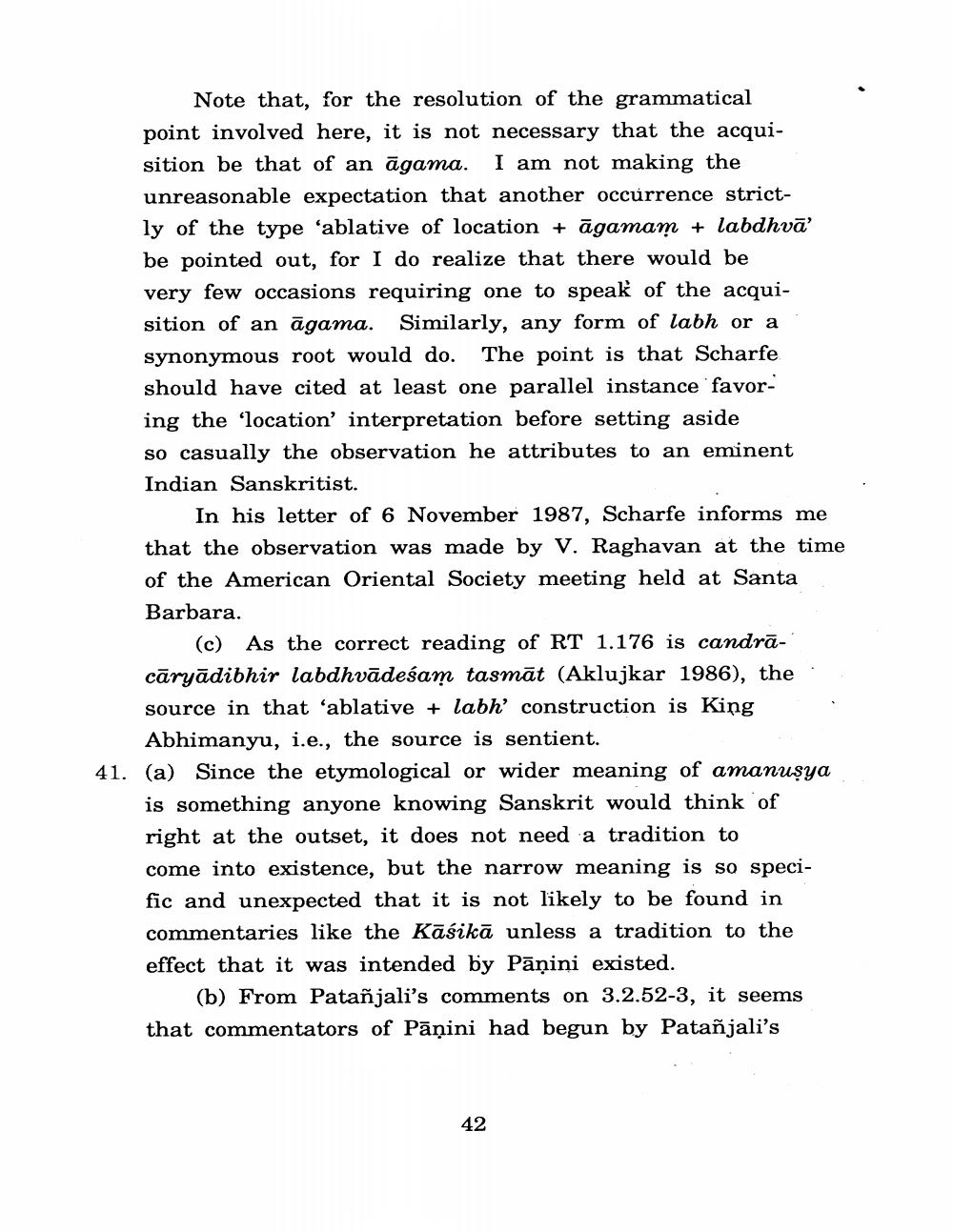________________
Note that, for the resolution of the grammatical point involved here, it is not necessary that the acquisition be that of an agama. I am not making the unreasonable expectation that another occurrence strictly of the type 'ablative of location + agamam + labdhva' be pointed out, for I do realize that there would be very few occasions requiring one to speak of the acquisition of an agama. Similarly, any form of labh or a synonymous root would do. The point is that Scharfe should have cited at least one parallel instance favoring the 'location' interpretation before setting aside so casually the observation he attributes to an eminent Indian Sanskritist.
In his letter of 6 November 1987, Scharfe informs me that the observation was made by V. Raghavan at the time of the American Oriental Society meeting held at Santa Barbara.
(c) As the correct reading of RT 1.176 is candracāryadibhir labdhvadeśam tasmat (Aklujkar 1986), the source in that 'ablative + labh' construction is King Abhimanyu, i.e., the source is sentient.
41. (a) Since the etymological or wider meaning of amanuṣya is something anyone knowing Sanskrit would think of right at the outset, it does not need a tradition to come into existence, but the narrow meaning is so specific and unexpected that it is not likely to be found in commentaries like the Kāśikā unless a tradition to the effect that it was intended by Panini existed.
(b) From Patanjali's comments on 3.2.52-3, it seems that commentators of Panini had begun by Patañjali's
42




